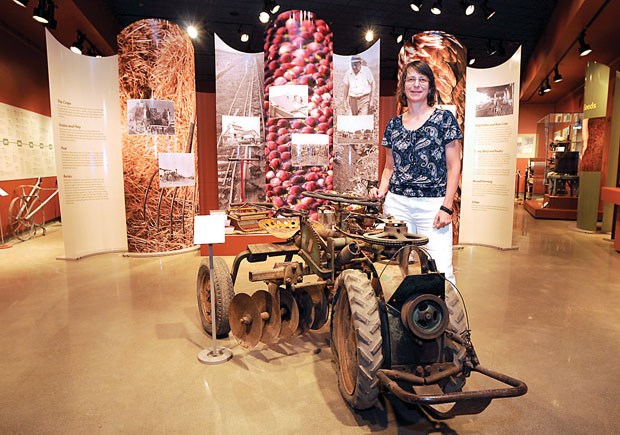Most of us know Richmonds pet name of the Garden City, but do you know where the name came from?
In 1929, Richmond harvested peat for use as insulation, poultry litter, stock feed, packing sheets, fertilizer, and during WWII, as an alternate fuel source.
This is just one of many interesting facts from Richmond Museums latest exhibit, Garden City: Richmonds Agricultural Legacy.
Visitors are invited to explore Richmonds agricultural history from its early days to the modern industry it is today.
The exhibit draws upon artifacts and photos from the Richmond Museum and City of Richmond Archives collections, as well as artifacts on loan from community members. The exhibit opens with a public reception on Thursday, June 21 at 5:30 p.m.
As early as 1862, the farms of South Arm, Brighouse, Steveston and the eastside of Lulu Island supplied the region with food.
Garden City: Richmonds Agricultural Legacy examines how farming has transformed the Lulu and Sea Island delta, and features some surprising information about Richmonds agricultural past.
For instance, Richmond dairies, a significant industry, once supplied Vancouver markets with milk by wagon without refrigeration.
The exhibit touches on a variety of topics from early pioneer farming history, to Richmonds diverse crop and livestock production, to todays food security concerns.
It will include the Grauer (Frasea Farms Ltd.) milk wagon and other agricultural equipment from the museums artifact collection.
Despite development pressures from Richmonds spectacular growth in recent years, public support for the citys agricultural heritage has grown. The story of the Agricultural Land Reserve and its role in preserving the remaining viable farmland in Richmond for future generations will also be featured.
The Garden City: Richmonds Agricultural Legacy exhibit runs to October 21, 2012, and is funded by the City of Richmond, Richmond Museum Society and the British Columbia Arts Council.



